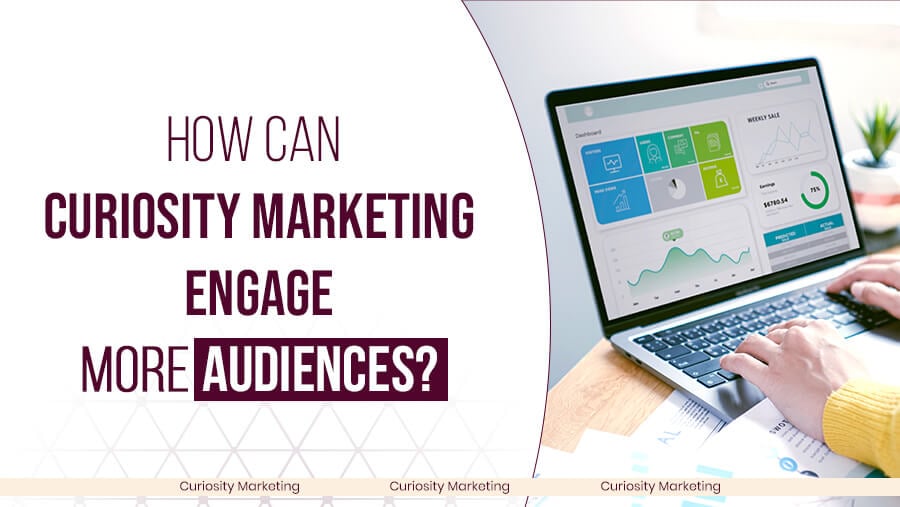
What Is Curiosity Marketing to Engage More Audiences?
Have you ever heard the saying 'curiosity killed the cat'? Curiosity has indeed been historically bad for cats. However, this is not entirely true in real life.
Humans are curious by nature, which is an innate tendency. Curiosity is what pushes us to learn new information and gather fresh experiences – the staples of a creative mind. And these elements are precisely what makes curiosity such a powerful marketing tool.
In fact, as said by Leo Burnett, "Curiosity about life in all of its aspects, I think, is still the secret of great creative people."
Let's illustrate this with the viral IBM "Smarter Planet" campaign.
They created and shared a series of innovative ads and videos that focused on IBM tech’s ability to solve prominent global issues like – traffic congestion, energy efficiency, and water conservation.
However, instead of simply listing out the solutions, IBM left a curiosity gap by posing results in their ads like – Drivers can see traffic jams before they happen.
But they left out answering this question – “How is that possible?” The gap left viewers wondering and wanting to learn more about IBM's solutions.
This unique campaign helped the company earn significant business opportunities within the first year itself. It showcases the power of curiosity marketing in the B2B landscape.
However, you need not conquer mountains to make curiosity work for you. It's a simple concept if implemented right. So, to lend you a helping hand, we'll go through the details of curiosity marketing.
We’ll share benefits, strategies, and examples. You can use our tips for acquiring customers – fast.
Now, get ready to feed your curious mind!
What Are the 6 Benefits of Curiosity Marketing?

Encouraging curiosity within your teams can be a powerful way to foster creativity and inspire fresh perspectives. By promoting this mindset, your team members can become innovative leaders who bring new and exciting marketing angles to your campaigns.
As stated by Harvey Mackay:
"Pay attention to those employees who respectfully ask why. They are demonstrating an interest in their jobs and exhibiting a curiosity that could eventually translate into leadership ability."
But here's the thing. You can also use curiosity externally to draw consumers toward your offerings. More on this later.
First, to succeed with curiosity marketing, you must understand its benefits. So, here they are.
1. Generate Engagement
Curiosity marketing creates a sense of intrigue in your potential customer's mind. You can effortlessly attract people to your brand when you trigger their curiosity.
Additionally, you can drive them to gather more information about your offerings. The end result? Increased engagement – the first step toward conversions.
2. Increase Demand for Your Solution
Let’s say you use curiosity marketing to create unique and attention-grabbing content. Obviously, when readers come across such resources, they'll read them. Thus, you enhance your brand's visibility.
Readers will most likely share such content more. And in days, your brand's name will go viral.
3. Enhance Brand Perception
Curiosity marketing can boost your firm's perceived value. You position yourself as a thought leader when you brainstorm and draft insightful content. You place your brand at the forefront of industry insights.
This effort translates into a more esteemed reputation among your intended audience. Your brand becomes synonymous with innovation and expertise, bolstering the positive image you project.
4. Multiply Conversions
Additionally, curiosity marketing effectively increases conversions. Creating resources that pique people's curiosity drives them to take action. This action might be any of the following:
- Signing up for a newsletter
- Exploring a product further
- Making a purchase
5. Drive Customer Loyalty
By nurturing anticipation around your brand, you generate an ongoing customer experience. This interaction forms a stronger bond between your audience and your brand. Therefore, it enhances their emotional connection.
This connection fosters repeat interactions and transforms customers into loyal, repeat buyers.
6. Provide Valuable Insights
Finally, curiosity marketing can give your business valuable insights into its target audience. By analyzing the data generated by your curiosity-inducing campaigns, you better understand what motivates your customers.
You also gauge what interests them, which can guide you in designing future marketing strategies.
To cut a long story short, curiosity marketing enables you to tap into the natural human desire to learn and explore. That being said, let's now check out some tried-and-tested strategies to implement curiosity marketing.
8 Techniques for Implementing Curiosity Marketing in the B2B Industry

So, how do you use curiosity to make it a part of your marketing strategy? Well, you must commence with RESEARCH. As Zora Neale Hurston says: "Research is formalized curiosity. It is poking and prying with a purpose.”
Therefore, thoroughly study and define your purpose – your end goal. And in this case, your objective is to understand your audience’s existing curiosity gap.
This gap is what the customer already knows MINUS what they want or need to know.

Your role as a marketer is to fill that curiosity gap with enough information – to capture a reader’s interest and lead them down the sales funnel. Let’s see how.
1. Foster Internal Curiosity
To implement curiosity marketing, you MUST start within your B2B company. You need a team of curious individuals who can ask questions about your:
- Buyers
- Decision-makers
- Key performance indicators of your marketing strategy
Curiosity marketing is about creating an "A-ha" moment similar to the moment when you came up with your product or service idea.
Do you recall Newton, who asked "why" when he saw apples fall? Similarly, your team needs to ask "why constantly.” Only then will they better understand your customers and improve your marketing strategy.
2. Master First Impressions
Imagine that you are going for a job interview that you want. You'll want to make the best first impression possible. You might dress professionally, prepare your answers to potential questions, and research the company beforehand.
Similarly, in B2B, your first impression on potential customers can significantly influence their decision-making process. This is why it is crucial to:
- Invest in your brand image
- Position yourself as a leader in the market
- Retain loyal customers
3. Study Your Buyers
Your first goal as a firm is effectively addressing your client’s requirements. Gauge their pain points and what motivates them to make a purchase. Then, tailor your messaging to resonate with them and avoid being filtered out.
Therefore, research and document your buyer personas, including their buying agendas and triggers.
NOTE: High-performing companies that exceed their lead and revenue goals have been shown to emphasize understanding their buyers and their decision-making processes significantly.
4. Guide Decision-Makers With Step-by-Step Selling
To make it easier for decision-makers to work with you and seal the deal, provide them with only the necessary information. It includes the details they need to complete each step of the sale.
Offer them small decisions along the way. Thus, you can help them minimize the risk of making wrong choices.
5. Use Intriguing Headlines in Your Content
In marketing, content is king! But how do you leverage content to feed your customers’ curiosity gap? For starters, focus on your headlines. After all, using intriguing headlines in your content is essential to grab the reader's attention.
You can't afford to have a dull or uninteresting headline. Why? Because it's the first thing the reader sees. And it determines whether they will read the rest of the content.
To pique your reader's curiosity, use attention-grabbing headlines that promise:
- A solution to a problem
- A unique benefit
- A secret that the reader may not know
For instance, you could use headlines such as:
- "Do You Want to Double Your Revenue? Check Out Our Guide”
- "Is Client Onboarding a Challenge? Our eBook Delivers the Solution"
- "What’s the Unseen Factor Behind High-Performing Teams?”
- “What’s Our Unconventional Strategy Behind a $100M B2B Deal?"
You can use such headlines in various marketing channels, including – blog posts, email newsletters, social media, ads, and webinars, among others:
- For instance, use a short, informative headline in your blog posts that grabs the reader’s attention instantly. You can also address your targeted audience in the write-up.
- On the contrary, think about concise and straightforward subject lines in an email newsletter. The recipient should understand at one glance what the message is all about.
6. Create Teaser Content
Teasers feed your customer’s curiosity gap by just giving a fleeting glimpse of what's to come. Hence, it makes buyers intrigued to learn more. For instance:
- You can create "Sneak Peeks" for upcoming product releases.
- You can find "Behind the Scenes" content. Here, offer your audience a glimpse of your company’s inner operations.
You can use various forms of media to execute the above tips:
- Videos
- Images
- Written content
You can use teasers across various marketing channels – social media, email marketing, and website landing pages.
For instance, you could share a teaser video on social media. Or, you may include a "Coming Soon" section on your website that offers a sneak peek of an upcoming offering.
7. Implement Exclusive and Interactive Content
When you offer exclusive content to your audience, they feel special. They think that they are getting something unique – compared to others.
Examples of exclusive content can include:
- eBooks
- Whitepapers
- Reports
– that offer valuable insights, tips, and strategies not easily found elsewhere.
You can incorporate the above resources in your emails, social media posts, and website landing pages.
In addition, interactive content is more engaging than traditional content because it involves the audience in a two-way conversation.
Examples of interactive content are – quizzes, polls, surveys, and other interactive tools. Just like exclusive content, you can incorporate your Interactive pieces in marketing channels like – email campaigns, social media posts, and website landing pages.
8. Use Storytelling Techniques
As a marketer, your end goal is for your buyers to engage with your product/service actively. You obviously don't want them just passively to browse through your content.
So, how to capture their attention? And how to sustain this attention? Create a compelling narrative that guides them toward a desired outcome.
Your transformation story should focus on customer pain points and how your solution can help them achieve their desires. Doing so can turn your product from a mere distraction into a valuable offering that customers are eager to engage with.
Curiosity Marketing Examples
Now that you understand how to implement curiosity marketing, let’s check out this strategy in action with some examples. Our illustrations showcase how different campaigns used the elements of surprise and novelty to catch people's attention and ignite their curiosity.
They also released enough information to create an information gap, enticing people to engage with the company and learn more. By striking a balance between giving too much information and giving too little, these campaigns successfully leveraged curiosity marketing to create buzz and drive engagement. So, let’s glance at them!
1. Uber and BBH Singapore's "Chope" Campaign
In an attempt to reduce traffic in congested cities across Asia, Uber and creative agency BBH Singapore created a campaign to place giant tissue packets in parking spaces around Singapore.
This campaign caught people's attention and ignited a widespread debate online about parking issues, getting people thinking and talking about the company.

2. The Legalsites Podcast
Brendan Kelso, a law graduate from the University of Newcastle and Founder of Legalsites, wanted to attract new clients and share his expertise. So, he decided to create the Better Law Firm Marketing podcast to break down the mistrust that exists in the industry. The podcast:
- Helped build rapport with prospects
- Generated new clients
- Created many other opportunities
The strategy was effective because of the podcast:
- Appealed to a niche audience
- Was optimized for SEO
- Offered a free law firm marketing plan in the episodes to help build an email list
- Interviewed influential guests
- Provided high-quality information

3. Discover Long Island’s TikTok Campaign
Amidst the COVID-19 pandemic, Discover Long Island joined the trend of creating and sharing TikTok videos to promote its destination marketing organization and its partners. They launched two separate TikTok accounts, one for consumers and the other for B2B promotion.
As a result, the organization won the U.S. Travel Association's 2021 ESTO Award for Best Social Media Campaign.
4. Tesla’s Cybertruck Reveals
Tesla's Cybertruck reveal video exemplified curiosity marketing. The unconventional design, kept secret until the event, piqued curiosity.
Limited pre-event details built anticipation. Live unveiling and viral reactions fueled excitement. Pre-orders with deposits created exclusivity. Minimal specs sparked speculation. Together, these tactics ignited curiosity and buzz around the Cybertruck.
The Way Forward
Curiosity marketing is a win-win strategy that benefits both your firm and your clients. There is no secret formula to attract the attention of key decision-makers and persuade them to purchase from you.
Building a team of curious individuals requires much effort, optimizing your branding, providing enough information to create interest without overwhelming the reader, delivering a compelling message, and documenting buyer personas.
Despite the hard work, the benefits of curiosity marketing outweigh the effort. You can earn loyalty and build lasting relationships by demonstrating your ability to help customers achieve their goals!
So, did our article answer all your queries about curiosity marketing? Or do you still have unresolved doubts? If yes, feel free to reach out to our experts at Revnew. We’ll be happy to help!




